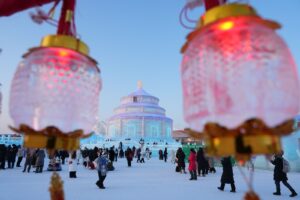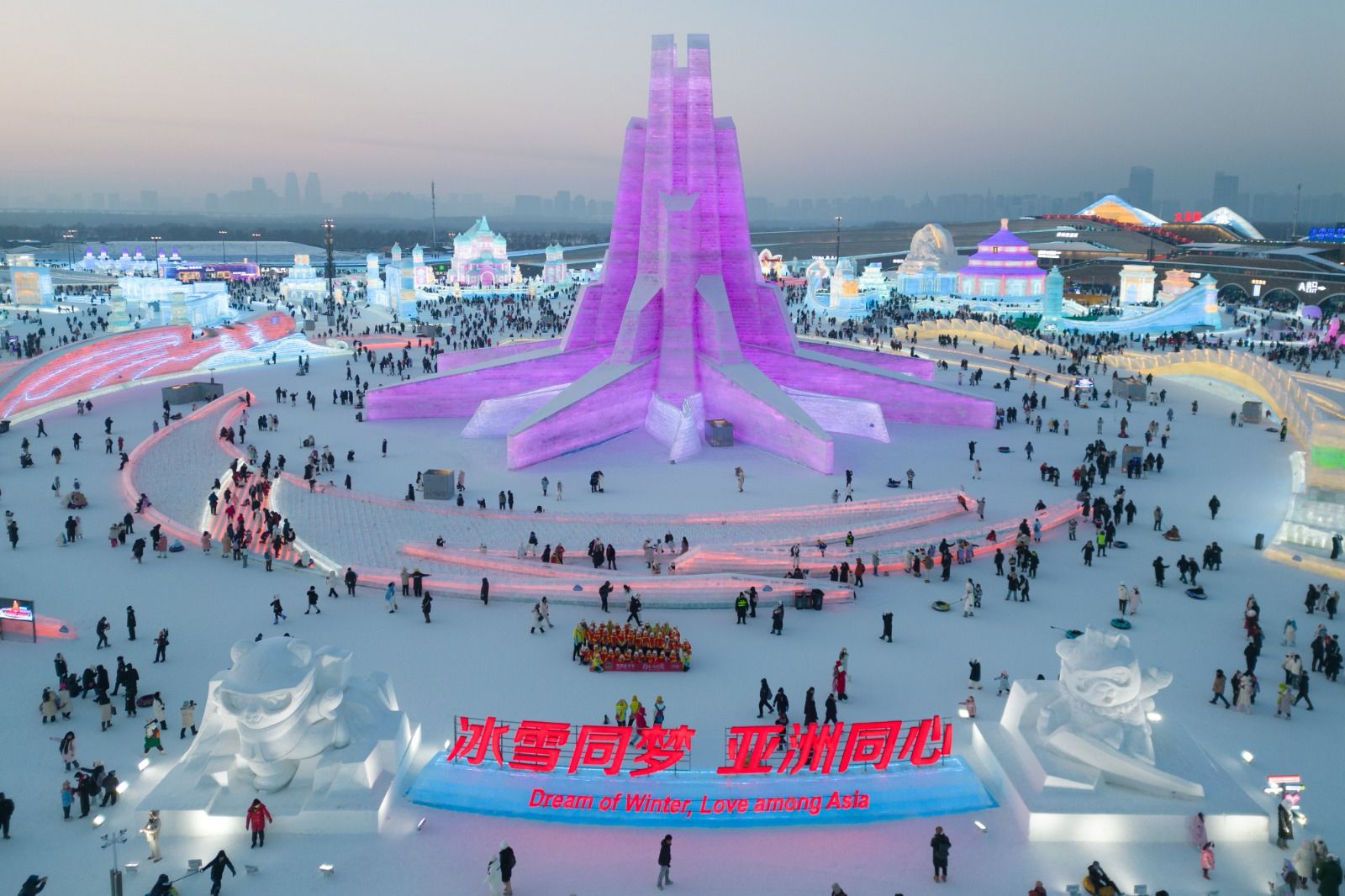HARBIN (Xinhua): Located in China’s northernmost province of Heilongjiang, Harbin Ice-Snow World, a breathtaking ice-themed park known for its dazzling ice sculptures, is now one of China’s hottest tourist destinations.
During the eight-day-long Spring Festival holiday that ended Tuesday, over 610,000 trips were made to the park. Daily trips on Saturday exceeded 100,000, setting a new record for single-day attendance. Since opening its doors this season, the park has received over 2.66 million visits.
The ice and snow tourism fervor is not limited to Harbin, but palpable nationwide. With its ambitious plans and growing public enthusiasm, China’s winter economy is poised to become a cornerstone of its cultural and economic landscape, experts noted in the latest episode of the China Economic Roundtable, an all-media talk show hosted by Xinhua News Agency.
EMBRACE THE WINTER
The increasing popularity of Harbin Ice-Snow World is partly attributed to the city’s upcoming role as the host of the 2025 Asian Winter Games, marking China’s second major winter sports event following the Beijing 2022 Winter Olympics.
Ai Yu, a senior official of the General Administration of Sport of China, noted that the success of the Beijing 2022 Winter Olympics has reshaped China’s relationship with winter sports, and transformed the landscape of ice and snow activities across the country.
Public enthusiasm for winter sports has surged, extending far beyond traditional hubs such as Heilongjiang. The trend is now moving southward, westward, and eastward, with activities no longer limited to winter but available year-round, both indoors and outdoors, Ai said.
Dai Bin, president of the China Tourism Academy, highlighted the role of technology and investment in promoting winter sports, with artificial snow and ice facilities making winter sports accessible even in the warmest regions.
A survey from the academy showed more than 70 percent of the respondents are willing to engage in winter leisure activities, with over 60 percent planning to maintain or increase their spending on winter tourism. The 2024-2025 winter season is expected to attract some 520 million trips, generating over 630 billion yuan (about 87.87 billion U.S. dollars) in tourism revenue.
Winter has evolved from a season of dormancy to one of vibrant activities, Dai noted. “In the past, winter meant freezing temperatures and a pause in daily life. Now, people embrace the cold and explore northern regions.”
MORE THAN JUST FUN
China’s winter economy is not just about sports and tourism; it’s also driving significant growth in manufacturing and services, experts said.
Peng Fuwei, a senior official of the National Development and Reform Commission, noted that the industry has formed a “dual-engine” structure, with winter manufacturing and services leading the way.
“China now produces a comprehensive range of winter sports equipment, from personal gear to high-end snowmaking machines and snow groomers. In 2023, winter equipment sales reached about 22 billion yuan,” he said.
Related service sectors are also thriving, with winter sports fueling growth in areas like event hosting, catering, accommodation, and training.
Heilongjiang, for example, has developed cutting-edge technologies like multi-robot ice sculpting and has established itself as a hub for testing and refining automobiles under extreme cold conditions. “Thanks to robotics, our ice sculptures are built faster and more efficiently,” said Qi Bin, deputy director of Heilongjiang’s culture and tourism department.
New cultural experiences, such as snowfield hot springs and concerts, are also emerging, further enriching the winter tourism ecosystem, Dai observed.
TO MAKE THE SNOWBALL BIGGER
Seeking to leverage its vast ice and snow resources to drive economic growth, China is doubling down on its commitment to expanding its winter economy, which encompasses sports, culture, equipment, and tourism.
The sector has already reached a trillion-yuan scale, and the country aims to grow it to 1.2 trillion yuan by 2027 and 1.5 trillion yuan by 2030, according to an official guideline released in 2024.
To achieve these goals, the government is integrating winter sports and tourism into its national development plans. “We will continue to support the industry through policies, funding, and infrastructure development,” Peng said, adding that key regions in places including Heilongjiang and Xinjiang will receive targeted support to become world-class winter sports destinations.
There are also plans to sustain the momentum of winter sports participation, expand their reach, and integrate sports events with tourism, according to Ai.
To further tap the industry’s potential, Dai called for extending the winter industry’s value chain. This includes combining winter equipment with personal gear and creating new travel routes, all in a bid to build a robust ecosystem for the winter economy.
Ultimately, the goal is to make winter sports and tourism an integral part of people’s lives, Dai added. “When people fall in love with winter activities, the foundation for a thriving winter economy will be firmly established.”


